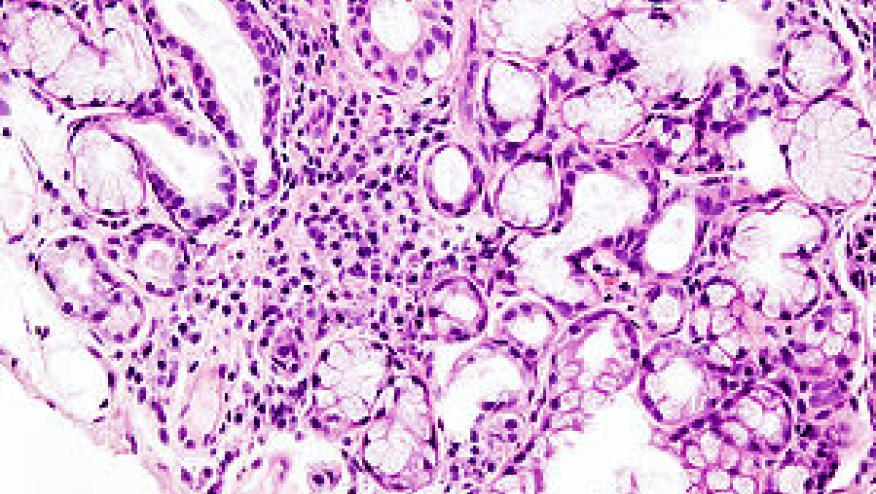Don't Blame the Weather in Sjogren's Save

Seasonal variations in symptoms -- commonly reported by patients with rheumatic diseases -- were not observed in a large cohort of patients with primary Sjogren's syndrome, French investigators found.
On a combined endpoint that reflected the three main symptoms of pain, fatigue, and dryness, scores (on a 100-point scale) were 57.7 during the spring, 59.5 in the summer, 55.9 in the fall, and 57.2 in the winter, reported Pierre-Marie Duret, MD, of Colmar General Hospital, and colleagues.
Those fluctuations did not differ significantly, according to the study online in Arthritis Research & Therapy (P=0.07288).
There have been multiple reports of cyclic weather-related variations in symptoms of rheumatoid arthritis and of effects related to barometric pressure and relative humidity in hip osteoarthritis.
In gout, new cases and acute attacks peaked during the summer months in a report from England and Wales, and in systemic lupus erythematosus, worsening of skin and joint symptoms was observed in the spring and summer in the Johns Hopkins Lupus Cohort.
Seasonal variations have not been examined in Sjogren's syndrome, however. "Based on previous reports that have demonstrated, in rheumatoid arthritis, a worsening of pain and fatigue in winter and an increase of dryness in spring in dry eye symptoms unrelated to primary Sjogren's syndrome, it could be hypothesized that fall and winter are associated with increased fatigue and pain and spring and summer with exacerbation of ocular and oral dryness in primary Sjogren's syndrome," Duret and colleagues wrote.
For the study, they analyzed data from 632 patients enrolled in the French nationwide Sjogren's syndrome cohort (Assessment of Systemic Signs and Evolution in Sjogren's Syndrome), which was established in 2006.
Analyses were adjusted for age, symptomatic treatments for dryness such as eye drops, and systemic immunomodulatory treatments such as hydroxychloroquine, azathioprine, and cyclophosphamide.
Each of the individual patient-reported components of the combined endpoint also showed no significant variations throughout the year. For pain, scores in spring, summer, fall, and winter were 52.2, 55.1, 51, and 51.7 (P=0.7541), while scores for fatigue were 61.9, 62.2, 60, and 61.9, respectively (P=0.7973). Scores for dryness were 58.9, 61.2, 56.9, and 57.9 (P=0.4108).
The investigators also looked at objective measures of dryness according to season. For the Schirmer test of ocular dryness, the adjusted odds ratios for having a positive test were 0.93 (95% CI 0.42-1.8, P=0.82) in the spring, 0.95 (95% CI 0.43-2.14, P=0.89) in the summer, and 0.75 (95% CI 0.38-1.53, P=0.35) in the winter compared with the fall, which was considered the reference period.
And for the unstimulated salivary flow, the odds ratios for having a pathologic salivary flow below 0.1 mL/min were 1.23 (95% CI 0.49-2.64, P=0.58) in the spring, 0.71 (95% CI 0.24-1.43, P=0.38) in the summer, and 0.83 (95% CI 0.34-1.68, P=0.6) in the winter.
Not only were the differences statistically nonsignificant, they also were not clinically relevant, the authors noted. The minimal clinically important improvements for dryness, pain, and fatigue were set at -10, -10, and -20 on the 100-point scale.
"The pathogenesis of primary Sjogren's syndrome is, not unlike other autoimmune diseases, considered multifactorial," the researchers wrote. "A complex relationship between environmental and immunological factors affecting a peculiar genetic background may interact and sustain disease onset in susceptible individuals."
Among potential environmental triggers are viral infections, with Epstein-Barr virus and cytomegalovirus peaking in winter and hepatitis B and C being more common in spring and summer. In addition, different exposure to ultraviolet B radiation in sunlight could influence the immunomodulatory effects of vitamin D.
Nonetheless, the current study found no evidence of significant or meaningful fluctuations in symptoms of primary Sjogren's syndrome according to season, although the authors noted that a limitation of their analysis was the lack of information about other weather factors such as temperature, humidity, and barometric pressure.
A longitudinal study that includes those factors extending over several years might be a useful way to more fully examine the effects of season and weather on Sjogren's syndrome symptoms, Duret and co-authors concluded.
The study was funded by the French Society of Rheumatology.
The authors reported no financial disclosures.










If you are a health practitioner, you may Login/Register to comment.
Due to the nature of these comment forums, only health practitioners are allowed to comment at this time.